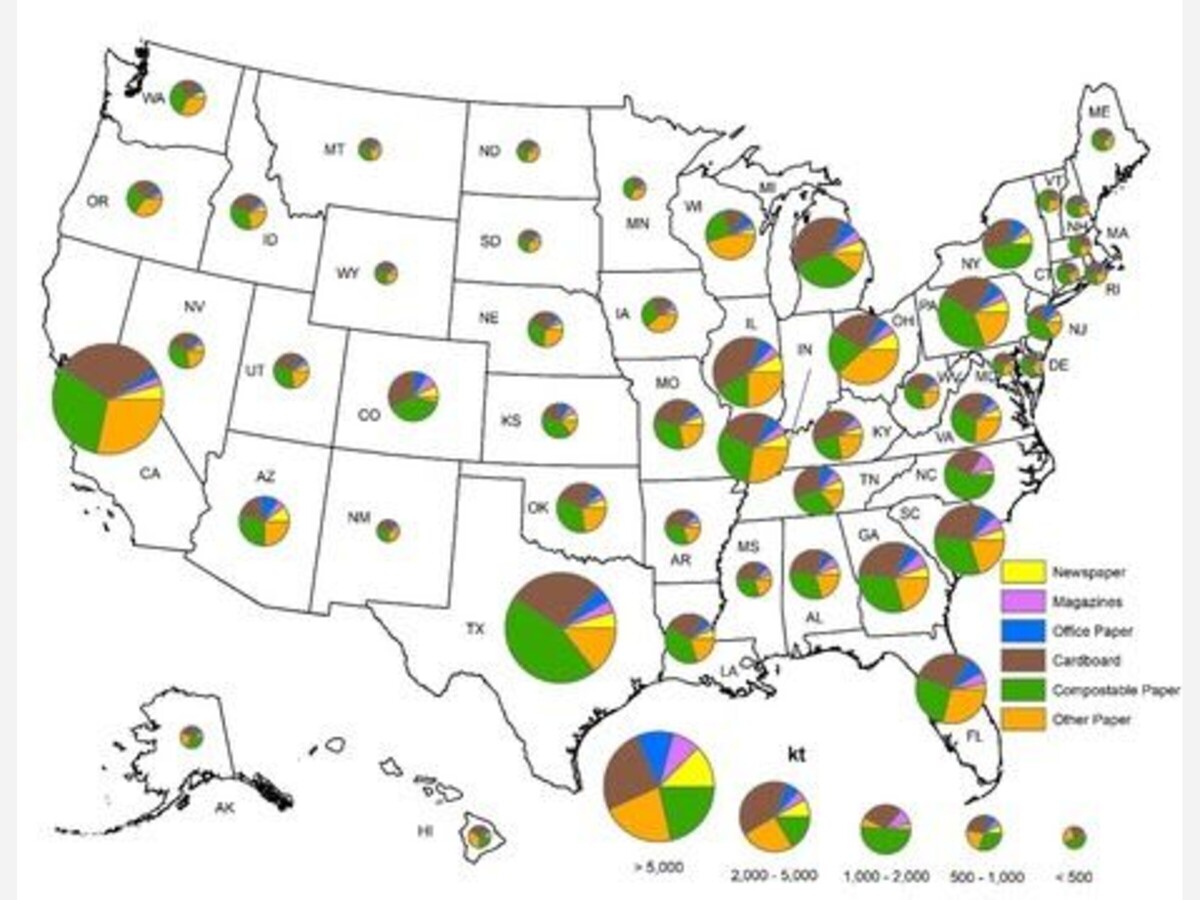Image


Paper and cardboard waste landfilled in 2019 by type and state. Pie charts’ sizes represent the quantity of landfilled material in kilotons. Material types are shown as a percentage of total landfilled material in different colors. Figure by NREL.
Piles of cardboard and paper littering America’s landfills represent $4 billion in lost economic value, according to a new analysis by researchers at the National Renewable Energy Laboratory (NREL).
The study, funded by the U.S. Department of Energy’s Bioenergy Technologies Office (BETO), found that of the estimated 110 million metric tons of paper and cardboard waste discarded in the United States in 2019, approximately 56% was landfilled and 38% was recycled. The rest was burned. Cardboard and paper—which includes newspapers, magazines, books, napkins, junk mail, photographs, pizza boxes, and milk cartons to name just a handful—constitutes about a quarter of all municipal solid waste.
In addition to the energy expended for disposing of landfilled waste and the lost potential economic value of recycling, landfilling paper and cardboard contributes to methane emissions, waste-disposal fees, deforestation, and local siting and environmental issues. Fortunately, improved waste-management strategies, like reuse, recycling, and composting can alleviate the cost and environmental impacts of landfilling.
Learn more about this latest research in a series of articles that quantifies the problem—and details opportunities—of landfilled materials.
By NREL